my cart
Secure checkout
Scent is one of the most direct ways we interact with the world. It can change how we feel, bring back a memory and even make us feel safe. That’s because it connects straight to the parts of the brain that handle emotion.
This is exactly why the smell and flavor of your CBD products matter. Those smells come from terpenes, which play a key role in how the product works, helping to shape its effects and benefits.
Terpenes are natural compounds found in all plants, not just cannabis. They give herbs, flowers, and fruits their distinct smell and taste. Lavender, for example, is rich in linalool, a terpene known for its calming scent. Citrus fruits are full of limonene, a terpene that smells fresh and zesty.
In cannabis plants (including hemp), terpenes do more than create aroma. They also work with cannabinoids like CBD and THC. This interaction can influence how your body processes cannabinoids and may even have therapeutic value of its own.
Because of that, CBD products with terpenes are considered the best option, where natural plant compounds are preserved to maximize effectiveness.
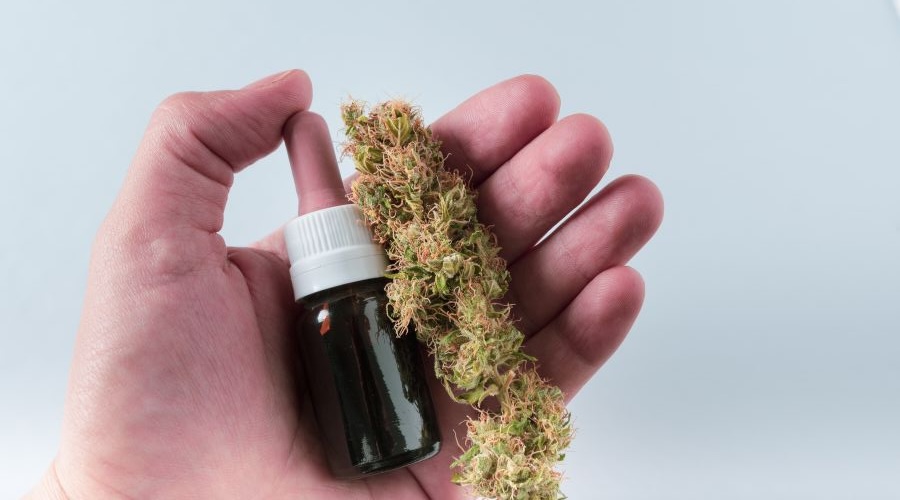
If a CBD oil has a bold, earthy, or citrusy smell, there’s a good chance it’s full spectrum, and that scent comes from the terpenes that can be beneficial to you. When you use CBD with terpenes, you’re getting more than just cannabidiol. These plant compounds can support mood, inflammation, sleep, and focus, depending on their profile.
Myrcene is the most abundant terpene in cannabis and is known for its potential relaxing and sedative effects. It may also help CBD absorb more efficiently, making it a staple in CBD oil with terpenes for sleep or post-workout recovery.
Limonene, with its bright citrus scent, has been studied for reduction in stress and nervous energy. It may positively affect mood by interacting with serotonin receptors, and it’s often found in CBD products meant for daytime calm without drowsiness.
Beta-caryophyllene is unique because it interacts directly with the body’s CB2 receptors, which are tied to inflammation. It’s often used in CBD terpenes formulations focused on recovery, pain support, or general wellness.
Linalool is known for its calming properties. It’s commonly included in evening or stress-relief CBD blends and may support better sleep and emotional balance.
Pinene, the terpene behind pine’s fresh scent, may support mental clarity and focus. It’s often present in CBD products designed to be uplifting without stimulation, making it useful for staying alert without caffeine.
In full-spectrum CBD products, these compounds work together to create what’s called the entourage effect, which can provide a more well-rounded experience than CBD alone.
The entourage effect is the idea that cannabis compounds work better together than in isolation. This includes cannabinoids like CBD and THC, but also flavonoids and, you guessed it, terpenes.
When you use CBD with terpenes, especially in a full spectrum extract, you’re encouraging the effect. Full spectrum products may have more noticeable effects, even at lower doses, compared to CBD isolate.
CBD terpenes play a central role here. For example, a full spectrum CBD oil with both CBD and beta-caryophyllene may help with inflammation more than CBD alone. It’s not that terpenes “boost” CBD per se, but they may influence how it’s absorbed and how it interacts with your body’s endocannabinoid system.
It’s easy to get these terms mixed up, especially with so much crossover in effects. Let’s clear it up:
So, the difference between THC, CBD and terpenes comes down to what they actually are and how they interact - cannabinoids (like THC and CBD) versus aromatic compounds (terpenes) that work alongside them.
The smell and flavor of CBD terpenes are important, they can influence how a product feels and how your body responds to it. But if you're choosing a CBD oil with terpenes just because it tastes good or smells like lemons or pine, you might be missing the bigger picture.
Always look for full or broad spectrum products if you want the benefits of CBD with terpenes intact. Check third-party lab results to see if terpene content is tested and listed, the more transparent the brand is, the better.
Extraction method matters too. Clean methods like CO2 extraction tend to preserve more natural CBD terpenes, giving you a richer, more functional product. And finally, make sure the product fits your intended use, a blend designed for sleep will have a different terpene profile than one meant for daytime stress support.
Scent and flavor are important, but there’s more to it than that. The scent of your CBD product reflects its terpene profile, and that profile helps shape how the CBD will interact with your body.
So when you’re buying CBD with terpenes, don’t stop at the label. Look into which terpenes are in there, where they come from, and if there’s a lab report to back it up. The smell is your first hint, but what it does is what really matters.
Let’s be honest, if you’re reading this, chances are you’ve either tried CBD and felt nothing, or you’ve heard enough from friends and ads to wonder, “Does CBD really work?”
Skepticism is fair. In a market flooded with shady gas station bottles and vague wellness claims, doubt isn’t just expected, it’s smart.
But that doesn’t mean CBD itself is the problem. The issue often comes down to low-quality products, misinformation, and a lack of transparency in the industry.
A lot of people dismiss CBD because their first experience didn’t deliver on the promise. Maybe they bought it on impulse at a checkout counter, maybe a friend hyped it up too much, or maybe it was a generic brand from a massive online marketplace with a slick label and no real testing.
But the truth is, this industry still carries baggage that creates confusion, even when products are legit. Here’s where the skepticism often comes from:
The result? Many people walk away thinking CBD is a scam, not because it doesn’t work, but because they’ve never had a chance to try a real, effective product.
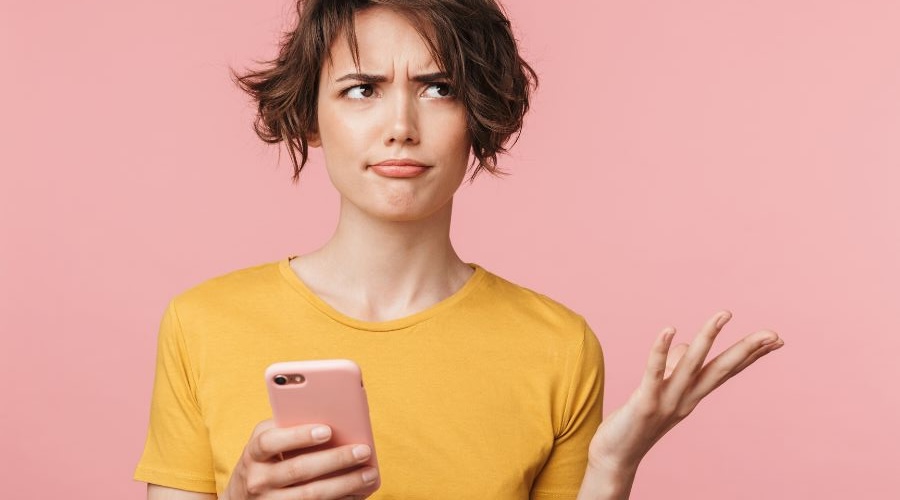
A COA, or Certificate of Analysis, is an independent lab report that confirms what’s actually in your CBD product. This includes cannabinoid content (how much CBD, THC, or other cannabinoids are present), and whether the product is free from heavy metals, pesticides, mold, and residual solvents.
Here’s how it works:
At South Tip, every product is tested, and the results are clearly posted, so you can browse our lab results anytime. We don’t just say what’s in our product, we prove it.
CBD benefits are often subtle and build over time. There is no sudden “kick”, it’s all about steady support that can help your body manage things like stress, discomfort, or poor sleep.
CBD can promote a general sense of calm, better sleep quality, improved focus, and less day-to-day tension. Some people use it to unwind before bed, others take it in the morning to help stay grounded throughout the day. And those dealing with soreness or everyday aches could expect a gentle relief.
CBD won’t fix everything, but you will get closer to discovering if CBD really works for you if you choose a product that’s right for your needs, in the right dose, and use it consistently.
This is the big question, and a fair one. The short answer is yes, CBD can work very well, but only when a few key conditions are met.
First, your body needs time to adjust. Unlike something like caffeine or alcohol, CBD doesn’t create an immediate, intense reaction. It interacts with your endocannabinoid system to help regulate things like sleep, mood, and stress, but those systems take time to rebalance.
Second, not everyone feels the effects the same way. Some people notice better sleep or less nervous energy within a few days. Others might not feel much until they’ve taken a consistent dose for a week or two.
Of course, how well CBD works often comes down to picking the right product for you, not just in terms of strength, but how it’s formulated and delivered. Oils, gummies, topicals, and capsules all interact differently with your body.
And remember, the CBD you buy today from a trusted brand isn’t the same as the mystery tinctures you could have purchased five years ago.
Being skeptical means you care about what you’re putting into your body, and that’s always a good thing. The CBD industry needs more people like you asking hard questions and demanding real answers.
But skepticism doesn’t have to mean total rejection. With the right information and a solid product, you might just find CBD to be a useful tool and maybe even something that helps you feel a little better.
If you ever sat down with your trusty friend, the search engine, to get some information about the benefits of CBD and got spooked by all the noise telling you that it’s terrible for you or that you’ll get addicted, you’re in the right place.
There are a lot of myths about CBD flying around, and usually, they all stem from the same place. People hear the word "cannabis" and fill in the blanks with outdated ideas, stories, or incorrect information.
For something so common that has a huge list of potential benefits that people swear by, CBD is quite misunderstood. So, let’s start with the basics.
CBD, or cannabidiol, is a natural compound found in cannabis. More specifically, it's one of the major cannabinoids in hemp, a variety of cannabis that's high in CBD and extremely low in THC.
Unlike THC, CBD doesn’t make you feel high. It interacts with your endocannabinoid system, a network in your body that helps keep things like sleep, mood, pain, and inflammation in balance.
People use CBD for all kinds of reasons, like chronic pain, anxiety, post-workout recovery, and just feeling more balanced day to day.
It doesn’t "fix" anything overnight, and it’s not magic. But when it’s made well and used properly, it can make a real difference.
So, let’s go through the most common CBD myths and find the truth behind them.
| Myth | Reality |
| CBD gets you high | False - CBD doesn’t cause a high and doesn’t have intoxicating effects. |
| CBD is illegal | False - Hemp-derived CBD with less than or equal to 0.3% THC is federally legal in the U.S. |
| CBD is addictive | False - CBD is not habit-forming and doesn’t cause withdrawal symptoms. |
| CBD isn’t safe | False - When made properly, CBD is generally safe and well-tolerated. |
| All CBD is the same | False - Product quality, ingredients, and cannabinoid content vary widely. |
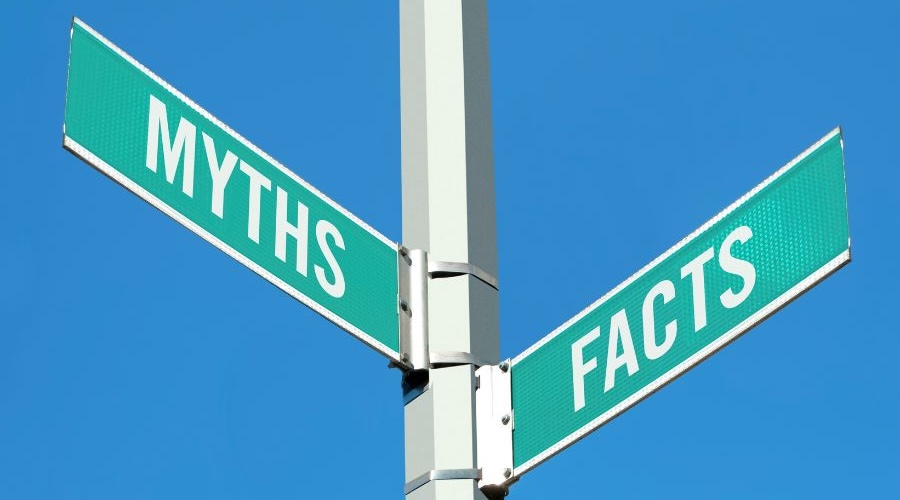
This is probably the most common of all myths about CBD, and it’s just not true.
This CBD myth sticks around because people often assume anything from cannabis must affect your mind the same way.
But CBD doesn’t have the psychoactive effect that THC does.
Instead of creating a euphoric or “stoned” sensation, CBD tends to produce a calming effect.
If you felt “off” after taking CBD, it might’ve had more THC in it than the label claimed, or it could’ve been a poorly made product.
That’s why buying from a reputable source matters and why it’s important to read lab results or COAs (Certificates of Analysis) before trying anything new.
Here’s one of those myths about CBD that made sense ten years ago but not anymore.
CBD is legal at the federal level in the United States, thanks to the 2018 Farm Bill. That law separated hemp (which CBD is usually derived from) from marijuana in the legal system, as long as the hemp contains no more than 0.3% THC.
So why the confusion?
Some states have added restrictions or murky rules around sales and labeling. And international laws vary widely. But in most of the U.S., CBD is legal to buy, sell, and use. The myth sticks around because cannabis laws change often and aren’t always clearly explained.
What matters is the source. If the product is made from compliant hemp and follows federal guidelines, it's legal.
Here’s another example of how CBD misconceptions take hold without much evidence.
The idea that CBD is addictive usually comes from people lumping it in with the broader category of cannabis or assuming anything that helps with pain or stress must have a downside.
CBD doesn’t trigger the dopamine reward system the way addictive drugs do, and it doesn’t cause physical withdrawal. You can stop taking CBD at any time without going through cravings or symptoms. That alone puts it in a completely different category from substances that cause dependence.
According to a World Health Organization study:
“In humans, CBD exhibits no effects indicative of any abuse or dependence potential.”
This CBD myth tends to come from a place of caution, and that’s understandable. When something becomes trendy fast, people naturally question whether it’s been properly vetted.
But the evidence so far points to CBD being generally well-tolerated, but that doesn’t mean side effects never happen.
Some people report mild issues like drowsiness, changes in appetite, or digestive discomfort, usually at higher doses. It can also interact with certain medications, so it’s important to do your research to be safe.
Still, for most users, the risks are low. If you take proper precautions, find a dose that suits you, and use high-quality products, you have nothing to worry about.
This is one of the more damaging CBD myths out there because it tricks people into thinking quality doesn’t matter. And that couldn’t be further from the truth.
Not all CBD is created equal.
The way it's grown, extracted, formulated, and tested all affect how well it works and how safe it is. Poorly made products can contain leftover solvents, pesticides, mold, or even heavy metals from contaminated soil.
You need to find companies that provide third-party lab results, use clean extraction methods like CO2, and source their hemp from reputable farms. If a brand’s not transparent about what’s in the bottle, move on.
We at South Tip grow our own hemp plants, our oils are extracted with CO2, and we consistently provide up-to-date 3rd party lab results.
There are also different types of CBD, and each type works a little differently. Full-spectrum tends to be more effective for most people thanks to something called the entourage effect, where the compounds work together to boost results. But not everyone wants THC in their product, so broad-spectrum or isolate might be a better fit.
There’s a huge variety of products, too: oils, capsules, gummies, topicals, vapes, and even drinks. What works for one person might not work for someone else. That’s why it’s worth trying a few formats to find your fit.
Most of the confusion around CBD comes from outdated info and half-truths that just won’t die.
Whether it’s the belief that CBD gets you high or the idea that it is addictive, these CBD misconceptions can keep people from trying something that might actually help them.
The key is understanding what’s real and what’s not. CBD isn’t a miracle cure, and it’s not for everyone, but it’s also not dangerous, illegal, or a shady internet drug. The more you learn, the easier it is to separate common CBD myths from facts.
If you’re thinking about trying CBD, focus on quality, start with a low dose, and see how your body responds. And ignore the noise. Most of it is just that.
Let’s face it, stress isn’t going anywhere. Between work, screens, and constant notifications, it’s easy to feel like your mind is always spinning.
Meditation is one of the best tools we’ve got for slowing things down, but if you’ve ever tried to sit still while your thoughts race and your body refuses to relax, you know it’s not always easy to drop into that calm headspace.
But here’s something worth knowing: CBD and meditation work surprisingly well together.
Using CBD for meditation can help calm a restless mind, relax the body, and make it easier to settle into that quiet space instead of just sitting there feeling distracted and frustrated.
Forget the stereotypes of sitting cross-legged in complete silence for hours. At its core, meditation is about learning to focus your mind and become more present.
It’s training your brain to notice when it’s wandered and gently bring it back, usually to something simple, like your breath or a sound. That process of noticing and returning, over and over, is what helps you calm down.
With regular practice, meditation helps you become less reactive, more grounded, and better at handling stress without getting pulled under.
You start to create a bit of space between what’s happening and how you respond. And the more consistent you are, the easier it becomes to tap into that calm, even in the middle of a busy day.
It’s simple but not always easy. That’s where CBD for meditation enters the picture.

CBD (short for cannabidiol) is a non-psychoactive compound in hemp that interacts with the body’s endocannabinoid system, helping regulate stress, mood, and focus. This makes it a natural companion to mindfulness, and here’s how:
If you’re new to CBD meditation, here’s a simple way to ease in. You don’t need to change everything about your routine. Start small, stay consistent, and see how it feels.
You don’t need anything fancy here. Just pop a CBD gummy or put a few drops from a CBD tincture under your tongue and give yourself some time to settle in. Go with something that feels easy and comfortable, this is about creating calm, not complicating your day.
Give yourself a space that feels calm and intentional. That could mean dim lighting, a quiet room, or even just putting your phone on Do Not Disturb and sitting in your favorite chair. You’re making time for stillness, and using CBD for relaxation helps you ease into that space with less resistance.
You don’t need to sit in silence for an hour. Try a 10-minute breath-focused meditation, a guided session from an app, or even a walking meditation if sitting still feels tough.
The beauty of using CBD for meditation is that it can help your body and mind find relaxation and calm, no matter the style. You might notice it’s easier to stay with the breath, let thoughts pass, or simply enjoy the stillness.
Let your mind settle at its own pace. Thoughts will come and go, that’s normal. The key is to notice when you’ve drifted and gently return your focus to your breath, your body, or the sound of your guide’s voice. Using CBD for focus can support this process by helping reduce restlessness and making it easier to stay engaged without gripping too hard.
When your session ends, give yourself a minute before jumping back into everything. Sit quietly, stretch a little, or jot down a quick thought in a journal.
The effects of CBD and mindfulness often extend beyond the session, this is a chance to notice how you feel and carry that calm forward into your day.
Meditation isn’t the only way to practice mindfulness. Here are a few more methods that combine mindfulness with CBD for focus and relaxation:
Blending CBD and meditation doesn’t have to be complicated. Start where you are, stay consistent, and be curious. You might be surprised how much calmer and more focused you feel, not just during your session but in the moments that follow.
CBD won’t do the inner work for you, but it can be the gentle nudge that helps you settle in, breathe deeper, and reconnect with yourself.
If it feels right, keep pairing CBD and meditation and using CBD for focus until you find what feels the best. The most important thing is that it supports you, mind, body, and spirit.
Everyone knows THC and CBD, but what about the rest of the cannabis family? Hidden within every cannabis plant is a treasure trove of lesser-known compounds called minor cannabinoids.
These powerful yet often overlooked compounds play a crucial role in shaping cannabis’s potential therapeutic effects. So, what are minor cannabinoids, and why do they matter?
Minor cannabinoids are naturally occurring compounds in cannabis, just like THC and CBD, but they exist in much smaller amounts. These lesser-known compounds work quietly in the background, influencing how cannabis affects the body and mind.
These compounds interact with the endocannabinoid system, a network of receptors that can help regulate essential functions like mood, pain, sleep, and appetite.
Some minor cannabinoids complement THC and CBD, refining their effects, while others contribute unique benefits of their own. This is why full-spectrum cannabis products, which contain a mix of cannabinoids, often feel more balanced and complex compared to isolates that focus on a single compound.
Though minor cannabinoids are typically found in small amounts, advancements in cultivation and extraction are making them easier to isolate and incorporate into products like oils, tinctures, edibles, and topicals. This opens the door for more precise cannabis experiences, allowing for tailored effects based on individual needs and preferences.
If you’re looking to fine-tune your cannabis experience, understanding these minor cannabinoids and their benefits could be a game-changer.
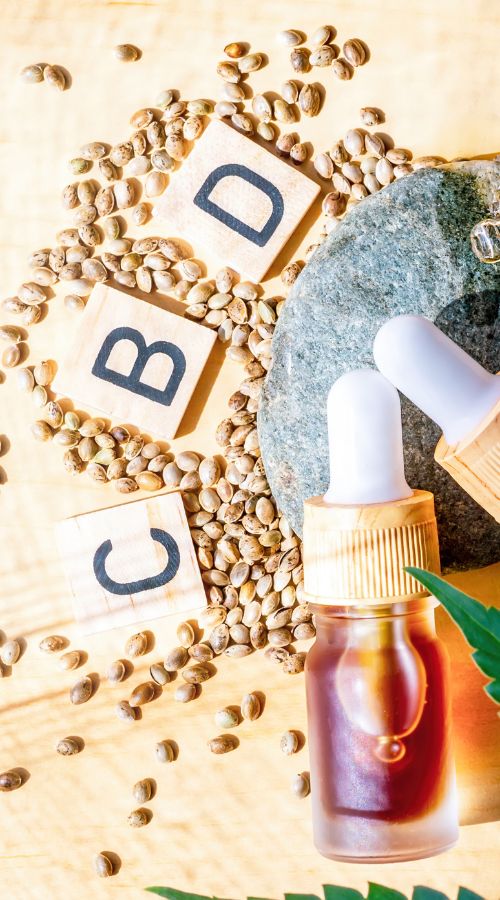
There are over 100 cannabinoids found in cannabis, but today, we’re focusing on five of the most promising minor cannabinoids and how they can elevate your cannabis experience.
But what really makes them special?
CBG is often called the “mother of all cannabinoids” because it’s the base compound from which many others are formed, but don’t let that fool you into thinking it takes a backseat.
This cannabinoid has a strong presence of its own and can offer a unique blend of clarity and calm that many users swear by. If CBD is all about relaxation, think of CBG as the cannabinoid that keeps you sharp and balanced without the jitters.
Its effects are often described as both uplifting and grounding, promoting focus and mental clarity throughout the day. If you’re looking to support productivity or simply want a sense of calm without feeling too sedated, CBG is the one to watch.
CBN is all about relaxation. While it doesn’t pack the psychoactive punch of THC, it’s the cannabinoid that many people turn to when they want to melt into their couch after a long day.
It can encourage a sense of calm, helping the body transition into a restful state with ease. Its effects are often described as soothing, making it a great choice for slowing down and easing into moments of stillness.
CBC is a fascinating minor cannabinoid that interacts with the body in a way that may support mood regulation and overall well-being. It is often found in full-spectrum cannabis products, where it works alongside other cannabinoids to create a balanced and holistic experience.
THCV is known for its potential uplifting and stimulating properties. It can enhance clarity, focus, and motivation, and offer an energizing effect that can help support productivity and engagement. Its clean, clear-headed nature makes it a great option for staying active without feeling overstimulated.
CBDV is a lesser-known relative of CBD that shares many of its soothing qualities. It is believed to play a role in supporting relaxation and overall balance. While it doesn’t produce a high, CBDV is gaining popularity among those looking for a gentle and non-intoxicating way to enhance their wellness routines.
Minor cannabinoids bring diversity and nuance to the cannabis experience. They help shape how different strains feel, adding layers of effects that go beyond just THC and CBD. Whether it’s the clear-headed focus of THCV, the deep relaxation of CBN, or the balanced calm of CBG, these compounds allow for a more tailored approach to cannabis use.
As consumer preferences evolve, cannabis products are shifting away from a one-size-fits-all approach. Minor cannabinoids play a crucial role in creating targeted formulations designed for specific moods, energy levels, and wellness goals.
They also contribute to the entourage effect, the idea that cannabinoids work better together, enhancing each other’s benefits.
Minor cannabinoids may not always be in the spotlight, but they are essential to the full cannabis experience. They add depth, variety, and unique effects that go beyond THC and CBD, making cannabis a more versatile and customizable plant.
So next time you're shopping for cannabis, take a closer look, you might just find a new favorite in the list of minor cannabinoids.
CBD and CBG might come from the same plant, but they bring very different experiences. One is all about relaxation, the other is more about clarity, and when they come together, they create something even better.
Whether you're already familiar with them or just starting to explore cannabinoids, understanding how they work together can help you make the most of what they have to offer.
Think of CBD and CBG as the yin and yang of cannabinoids. CBD, the overall relaxing one, can have the ability to melt stress, ease discomfort, and help you sleep like a baby.
CBG, on the other hand, is all about the mind. It calms those racing thoughts so you can be the go-getter you were born to be–possibly giving you a sharper focus and an uplifting effect that won’t leave you jittery. While they work well alone...together, they’re even better.
So, what’s the difference between CBD and CBG?
CBD and CBG interact with your body’s endocannabinoid system (ECS), a network that helps keep things like mood, pain, and inflammation in check.
The difference between CBD and CBG comes down to how they work within the body. CBD takes a more subtle, indirect route by influencing enzymes and receptors that help regulate the endocannabinoid system, gradually promoting balance and easing discomfort over time.
CBG, on the other hand, interacts directly with CB1 and CB2 receptors, which may result in faster-acting and more immediately noticeable effects.
This contrast in how they interact with the ECS is what makes them such a dynamic pair when used together.
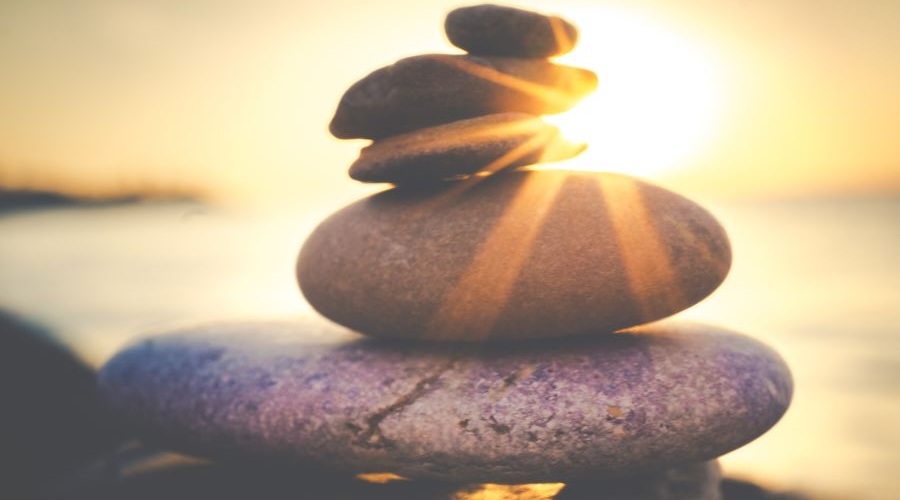
Yes, and it might just be the missing piece to your routine. They balance each other out, so you get calm focus instead of feeling too sluggish or too wired.
CBD alone can be a little too relaxing for some people, while CBG by itself might be a bit too energizing.
Combine them, and you get the best of both worlds: calm focus, steady energy, and relief that doesn’t drag you down.
That’s why we blend CBD and CBG in tinctures, topicals, and CBD+CBG gummies, making it easier than ever to get a consistent dose of both.
If you want to get the most out of CBD and CBG, consistency is key. Think of it like taking vitamins, it works best when it’s part of your routine, not just an occasional thing.
Your experience with CBD and CBG together also depends on how you use them. Factors like metabolism, body chemistry, and even the time of day can influence how these cannabinoids affect you.
Some people notice stronger effects when taking them with food, while others prefer using them on an empty stomach for faster absorption.
The right method depends on how fast you want to feel the effects and how long you want them to last:
The go-to for convenience. Easy to dose, tasty, and perfect for long-lasting effects throughout the day.
A few drops under the tongue deliver fast-acting effects, ideal for when you need relief or focus in a hurry.
Perfect for targeting specific areas of discomfort. Creams and balms infused with CBD and CBG can provide localized relief without affecting the whole body.
A classic choice for those who enjoy the ritual and fast-acting effects. Smoking CBD and CBG blends offers an instant experience, with a rich flavor profile and full-spectrum benefits.
The cannabis plant is full of different compounds that seem to play better together than alone. This phenomenon, called the entourage effect, means that cannabinoids like CBD and CBG enhance each other’s effects rather than just doing their own thing separately.
For example, CBD can sometimes feel a little too sedating, but CBG steps in to add a touch of alertness. On the flip side, CBG alone can be a bit stimulating, but CBD brings it back down to a calm, steady experience.
The result?
A more well-rounded, dialed-in effect that adapts to what your body needs.
With so many CBD and CBG products to choose from, how do you pick the right one? It comes down to what you’re looking for:
If relaxation and stress relief are your goals, a CBD-dominant product with just a touch of CBG can provide a soothing experience without feeling overly sedated.
For those who need sharper focus and mental clarity, a CBG-heavy blend with a small amount of CBD can help keep things balanced without feeling too wired.
And if you're looking for all-around wellness support, a 1:1 ratio of CBD and CBG together offers a well-rounded effect that adapts to your needs.
Beyond just picking a product, timing, and consistency make a difference. Some people find that taking CBD and CBG in the morning helps them start the day with clarity and ease, while others prefer using them in the evening to unwind.
Tracking how you feel after different doses and times of day can help fine-tune your routine. Pay attention to how your body responds, some days might call for a little more CBG for focus, while other times, a CBD-heavy approach might be what you need to fully relax.
Over time, you’ll find the right rhythm that keeps you feeling balanced and at your best.
At the end of the day, CBD and CBG benefits are about giving your body the support it needs to function at its best. Whether you’re looking to stay calm under pressure, sharpen your focus, or just feel better overall, the right balance of these cannabinoids can help you get there.
By playing around with different ratios and consumption methods, you can create a routine that fits your lifestyle, one that keeps you feeling good without unwanted side effects.
Ever wonder why CBD works better for some people than others? It’s not just about the product you’re using, it’s about how well your body absorbs it. No matter how high-quality your CBD is, if your body isn't effectively processing it, you might not be getting the full benefits.
The good news?
There are ways to improve CBD absorption. From choosing the right consumption method to pairing CBD with the right foods, small changes can make a big difference. Knowing more about bioavailability can help you fine-tune your routine and get the most out of every dose.

Bioavailability is a fancy term for how much CBD actually enters your bloodstream after you take it. The higher the bioavailability, the more effective each dose will be, meaning you’ll need less CBD to achieve the desired effects.
However, not all CBD is absorbed at the same rate. Once consumed, CBD must pass through various biological processes that determine how much of it your body can actually use. Factors like metabolism, digestion, and even the presence of other compounds can impact how efficiently CBD is absorbed.
Because of this, the way you take CBD plays a crucial role in how much actually reaches your system and how quickly you feel its effects.
When it comes to CBD absorption, the method you choose makes all the difference. Each delivery method has its own bioavailability, affecting how quickly and effectively CBD works in your body.
CBD gummies take longer to kick in but provide longer-lasting effects. Since they must pass through digestion and the liver, a portion of the CBD is lost before it reaches the bloodstream. However, taking CBD with fat-rich foods can significantly improve bioavailability.
CBD tinctures work much faster when placed under the tongue (sublingual absorption). Holding the oil under your tongue for 60-90 seconds allows it to bypass digestion and enter directly into the bloodstream, significantly improving the CBD oil absorption rate and bioavailability.
Topical CBD absorption works differently, it doesn’t enter the bloodstream but interacts with endocannabinoid receptors in the skin. If you’re dealing with muscle soreness, joint stiffness, or skin concerns, a CBD cream or balm can provide targeted relief without affecting the rest of the body.
Even the way you inhale CBD can impact bioavailability. If you’re vaping or smoking, taking slow, deep inhales and holding the vapor in your lungs for a few seconds helps maximize absorption. Quick, shallow puffs may result in exhaling much of the CBD before it can be fully utilized.
The best part? You don’t have to pick just one method. Many people find that combining CBD products, like using a tincture for full-body effects and a CBD cream for sore muscles, can help them get the most out of their routine.
If you’re using CBD isolate, you may not be getting the full benefits that hemp has to offer. The entourage effect is the idea that CBD works better when combined with other cannabinoids and terpenes naturally found in the plant.
When you take full-spectrum or broad-spectrum CBD, you’re not just getting cannabidiol, you’re also benefiting from compounds like CBG, CBN, and even small amounts of THC. These help CBD absorb better, stay in your system longer, and work more effectively.
Terpenes, the aromatic compounds in hemp, also play a role. Some terpenes, like myrcene and limonene, may help CBD cross cell membranes more easily, improving bioavailability.
No matter which method you choose, there are simple ways to optimize absorption and ensure your body gets the most out of every dose.
If you want to maximize your CBD experience, a few simple tweaks can make a big difference:
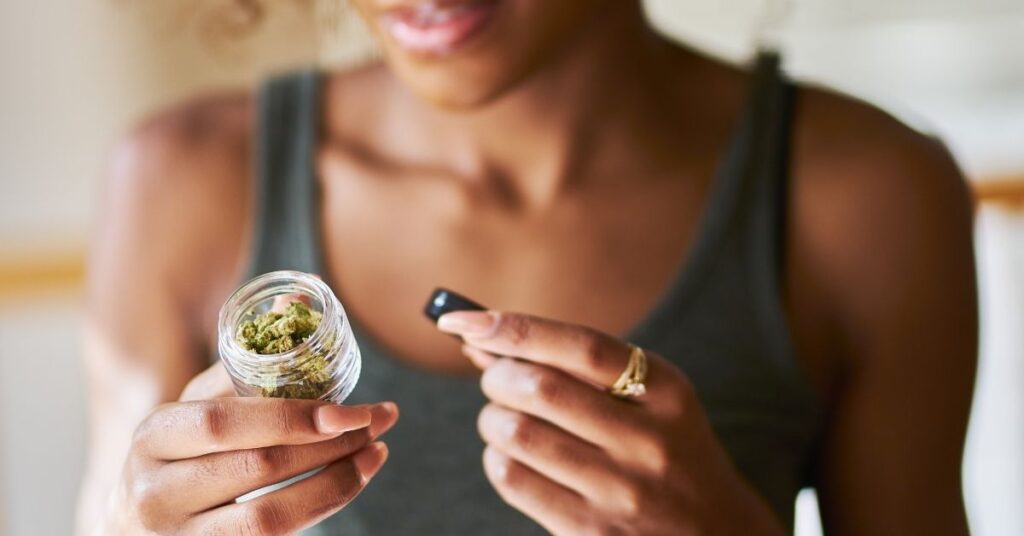
Many people assume that taking more CBD means stronger effects, but that’s not always the case. Absorption isn’t just about how much CBD you take, it’s about how much your body can actually use. Once your system reaches a saturation point, increasing the dosage doesn’t necessarily lead to better absorption.
CBD follows what’s known as a biphasic effect, meaning that low and moderate doses may have different effects than high doses. In some cases, taking too much CBD can actually make it less effective because the body struggles to process excess amounts at once. This is why finding the right dosage, rather than just increasing it, is key to maximizing bioavailability and benefits.
At the end of the day, CBD isn’t one-size-fits-all. How well it works depends on how you take it, what you take it with, and how your body processes it. Whether it’s adjusting your dosage, switching up your method, or making small tweaks like taking CBD with a meal, optimizing absorption can help you get stronger, longer-lasting effects.
The key is to find what works for you, experiment, stay consistent, and make mindful choices. With the right approach, you can maximize CBD’s potential and truly experience its benefits.
Cannabidiol (CBD), a non-intoxicating compound derived from the cannabis plant, has garnered significant attention for its potential therapeutic benefits across a spectrum of health conditions.
Its versatility has led to a surge in scientific inquiries and clinical trials, aiming to substantiate its effectiveness and safety across various medical contexts. As our understanding deepens, there is hope that CBD could become a cornerstone in treating numerous ailments, providing a natural and effective therapeutic option.
A landmark development in this field occurred when the U.S. Food and Drug Administration (FDA) approved a CBD-based medication for the treatment of specific seizure disorders.
This groundbreaking approval underscores the therapeutic potential of CBD and also paves the way for future research and acceptance of cannabinoid-based treatments in mainstream medicine.
So, what does the science say about CBD and epilepsy?
For years, researchers have explored the potential of CBD for epilepsy, investigating how this non-intoxicating compound interacts with the brain and nervous system.
Early studies and anecdotal reports suggested that CBD might help reduce seizure activity, sparking interest in its therapeutic applications.
As scientific understanding deepened, clinical trials were conducted to evaluate CBD’s safety and efficiency in treating seizure disorders. This research laid the foundation for the first FDA-approved CBD treatment, Epidiolex, marking a significant milestone in epilepsy care.
Unlike taking over-the-counter CBD oil for epilepsy, which lacks regulatory oversight, this prescription treatment has undergone rigorous testing to ensure its reliability for patients with severe and drug-resistant epilepsy.
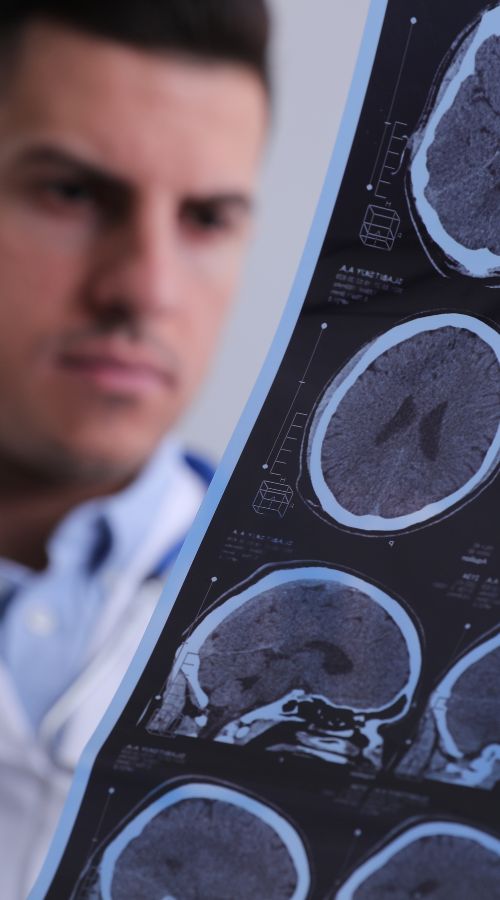
Epidiolex is a highly purified, pharmaceutical-grade CBD medication designed specifically for treating seizures associated with Lennox-Gastaut syndrome (LGS), Dravet syndrome, and Tuberous Sclerosis Complex (TSC).
While the exact mechanism of action is still being studied, Epidiolex is believed to work by modulating neural activity in ways that help reduce seizure frequency. Unlike other cannabis-based compounds, Epidiolex does not activate CB1 or CB2 cannabinoid receptors and doesn’t contain THC, meaning it does not cause psychoactive effects.
Epidiolex received FDA approval after multiple randomized, double-blind, placebo-controlled trials confirmed its effectiveness in reducing seizures:
In a clinical trial, Epidiolex reduced convulsive seizures by up to 44%, compared to a 27% reduction in the placebo group.
Patients taking Epidiolex experienced a 41–44% reduction in drop seizures, compared to 14% with a placebo.
The FDA expanded Epidiolex’s approval in 2020 after studies showed that 48% of patients experienced a 50% or greater reduction in seizure frequency.
Epidiolex is a highly purified form of cannabidiol, ensuring that each dose is free from THC, contaminants, and unregulated additives.
Unlike general CBD oils, which can differ in potency from batch to batch, Epidiolex is produced under strict quality control, guaranteeing precise and standardized dosing.
Perhaps most importantly, Epidiolex has undergone extensive clinical trials, demonstrating both safety and effectiveness in treating specific seizure disorders, a level of validation that over-the-counter CBD products do not have.
This is where regulatory caution comes into play. While Epidiolex is FDA-approved, over-the-counter CBD oils for epilepsy have not been clinically proven or regulated for seizure treatment.
Clinical trials have examined various CBD products, including CBD oils, transdermal applications, and long-term oral use, to determine their potential to reduce seizure frequency and severity. Some studies suggest that CBD may help manage seizures in certain cases, particularly in drug-resistant epilepsy, but results remain mixed, and more research is needed to confirm its effectiveness.
Many CBD epilepsy products on the market vary widely in:
A 2020 study analyzed various commercial CBD products and found that over 70% were mislabeled in terms of actual CBD content, raising concerns about their safety and consistency.
Patients who rely on accurate dosing for seizure control should exercise extreme caution when considering non-FDA-approved products.
Even with FDA-approved Epidiolex, CBD is not without side effects and risks. Reported side effects include:
Additionally, CBD can interact with other anti-seizure medications, altering their effectiveness. Patients considering CBD for epilepsy should always consult a neurologist or epilepsy specialist before making any changes to their treatment plan.
Epidiolex has brought new hope when it comes to CBD and epilepsy treatment for specific, severe conditions, and we’re eagerly waiting on more scientifically backed treatments. Hopefully, Epidiolex’s success will encourage new research and clinical trials that will help treat epilepsy with CBD products.
Until that happens, Epidiolex remains the only FDA-approved CBD medication for epilepsy, and while broader research is ongoing, no other CBD oils or extracts can claim the same level of regulatory approval or proven effectiveness.
For those living with epilepsy, consulting a medical professional is essential before considering any CBD-based treatment. While the potential of CBD epilepsy treatments is exciting, ensuring safety and effectiveness should always come first.
If you’ve got CBD products in your wellness routine, you want them to stay fresh, effective, and worth every penny. But, like all products, CBD has a shelf life, and how you store it makes all the difference.
Proper storage preserves the product’s potency and flavor and ensures you’re getting the best results every time you use it. Whether it’s oils, tinctures, edibles, or topicals, a little extra care goes a long way in keeping your CBD in tip-top shape.
Storing your CBD products correctly isn’t just about keeping them looking nice, it’s key to preserving their quality, potency, and effectiveness. Light, heat, air, and moisture can all break down cannabinoids over time, and the wrong conditions can cause your CBD to lose its punch faster than you’d think.
In general, CBD oils and tinctures have a shelf life of about 12 to 24 months when stored properly. Their stable formulations make them last longer than other products, but only if you keep them in a cool, dark place.
Edibles, on the other hand, don’t last as long because of their ingredients. For example, gummies or baked goods might only stay fresh for a few months, especially if they contain dairy or other perishable ingredients.
Topicals like balms and creams can last up to a year or more but are still sensitive to temperature changes and exposure to air.
Good storage makes CBD products last, so it’s worth taking a few simple steps to protect your investment.
But how can you store CBD products at home to make them stay fresh and efficient?
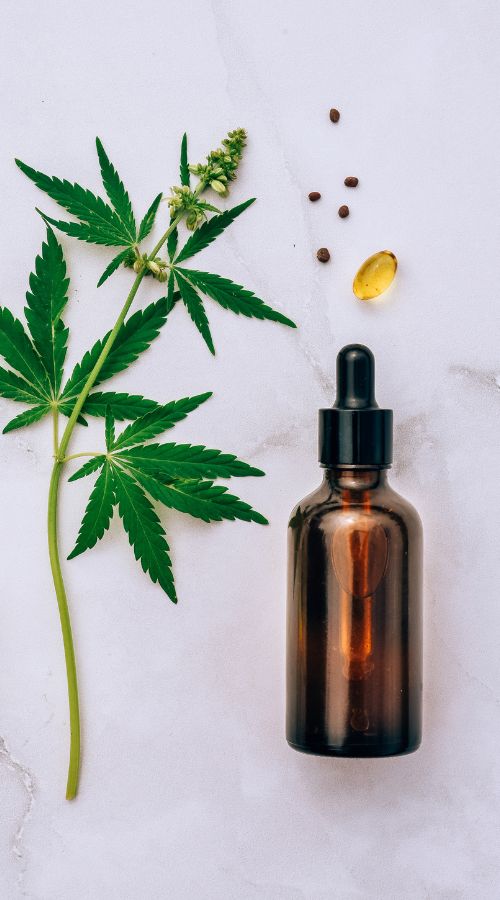
Heat is not a friend to CBD. High temperatures can break down cannabinoids, making your product less effective. Oils and tinctures should be stored somewhere cool, like a pantry or cabinet away from appliances that generate heat.
If you’re dealing with edibles, especially things like chocolates or gummies, pop them in the fridge for extra freshness.
Light exposure, especially UV rays, can degrade your CBD and shorten its shelf life. That’s why most CBD oils come in dark bottles, to help block out light. To keep things fresh, store your products in a drawer, cabinet, or any other dark spot away from windows.
Properly sealing your CBD products after each use is essential for keeping them fresh. Make sure the caps, lids, or droppers are tightly closed to prevent air exposure, which can cause the cannabinoids to degrade over time. Keeping your products securely sealed minimizes oxidation and helps them stay potent for as long as possible
The packaging your CBD comes in is designed to protect it, so don’t be tempted to transfer it to something else. Dark glass bottles, airtight pouches, or sealed jars are there for a reason, they help block out light, air, and moisture.
Not all CBD products need to be refrigerated, but it can help extend the shelf life of edibles or topicals with perishable ingredients. For CBD oil, refrigeration isn’t usually necessary unless you live in a particularly warm climate.
Moisture is the enemy of many CBD products, especially edibles and capsules. Humid environments can cause mold or bacteria to develop, so keep your CBD in a dry, stable place. Avoid storing it in bathrooms or other areas with fluctuating humidity levels.
Always store CBD products upright to avoid leaks, spills, or contamination.
For oils and tinctures, laying them on their side or upside down can cause the liquid to collect around the cap, leading to sticky messes or even loosening the seal over time. Keeping products upright ensures the packaging stays intact and protects the contents from unnecessary exposure to air or bacteria. It’s a simple step that can prevent waste and keep your CBD fresh longer.
CBD products come with an expiration date for a reason, it’s a guide to how long they’ll remain effective. Proper storage can help you get the most out of this timeframe but don’t push it. If something smells, looks, or tastes off, (even before the expiration date) it’s probably time to replace it.
Using expired CBD products likely won’t harm you, but it probably won’t do much good either. Over time, cannabinoids lose their potency, meaning an expired product may not deliver the results you’re expecting. It is worth noting that the expiration date is determined by the ingredient with the shortest lifespan.
For CBD oils and tinctures, expired products can develop a funky taste or smell, and the oil might start to separate. While it’s probably not dangerous, it’s a clear sign the product has seen better days. We don't recommend using products that smell or taste funky, though.
Edibles are trickier because their shelf life depends on more than just the CBD. Ingredients like dairy or sugar can spoil over time, which could cause an upset stomach if consumed. If your gummies, chocolates, or other edibles look or taste weird, it’s best to toss them out.
Topicals like balms and creams usually hold up a bit better. Even if they’ve expired, they’re unlikely to cause harm, though they may lose their consistency or effectiveness. If you notice mold, discoloration, or a change in texture, it’s definitely time to throw them away.
Storing your CBD products the right way isn’t complicated, but it makes all the difference in keeping them fresh, potent, and effective.
A little attention to things like temperature, light, and air can help extend their shelf life and make sure you’re getting the full benefits each time you use them. With proper care, your CBD will stay at its best, ready to support you whenever you need it.
Ever wonder why some CBD products seem to work wonders while others fall flat? A lot of it comes down to how the CBD is extracted from the hemp plant. The extraction process isn’t just a technical step, it’s the backbone of what makes a product pure, potent, and safe to use.
From the way the hemp is prepared to the methods used to extract cannabinoids, every detail matters. These steps shape the final product, impacting not only its quality, but how effective it’ll be for you.

Before we even get to the question of how CBD is extracted, there’s a lot of behind-the-scenes work that sets the stage. It all starts with the hemp plant itself. High-quality CBD begins with high-quality hemp, carefully grown and harvested, then properly dried to preserve the plant’s natural compounds.
The way the plant is handled after harvesting is equally important. Farmers and processors ensure that the hemp is free of contaminants like pesticides, heavy metals, and mold. Once that’s done, the raw plant material is ground into a fine consistency, almost like coffee grounds. This preparation makes it easier to extract the cannabinoids and terpenes that give CBD its power.
Every detail at this stage matters because poor handling can lead to lower yields, impurities, or even harmful byproducts. So, even before the extraction process begins, the foundation for a high-quality CBD product is already being laid.
CBD doesn’t exist in its final form when it’s still in the hemp plant–it’s locked within the plant material alongside other cannabinoids, terpenes, and compounds.
Extraction is the process that transforms raw hemp into the oils, tinctures, and gummies you know and love. It separates beneficial compounds from the plant material, leaving behind unwanted substances like chlorophyll or waxes.
The process begins by combining the prepared hemp with a solvent—this can be CO2, ethanol, or even oil, depending on the method. The solvent works as a carrier, separating the CBD and other compounds from the plant fibers. Once extracted, the mixture is filtered and refined to ensure it’s free from impurities.
At its core, CBD extraction is about unlocking the plant’s potential and ensuring that what ends up in your bottle or gummy is both safe and effective.
The way CBD is extracted from hemp plays a huge role in the quality and effectiveness of the final product. Each method has its pros and cons, and knowing the difference can help you choose products that suit your needs.
CO2 extraction is considered the best method for creating high-quality CBD. This method uses carbon dioxide in its supercritical state to extract cannabinoids and terpenes with remarkable precision. By carefully controlling temperature and pressure, manufacturers can isolate the most beneficial compounds while leaving behind unwanted substances like chlorophyll or waxes.
What makes CO2 extraction stand out is its ability to produce exceptionally pure and potent CBD. Because no harsh chemicals are used, the process leaves no residual solvents, ensuring a clean final product.
It also allows for customization, as manufacturers can tweak the process to preserve specific cannabinoids and terpenes, enhancing the entourage effect.
CO2 extraction is also environmentally friendly, as carbon dioxide is a sustainable and recyclable resource.
While this method requires advanced equipment and technical expertise, it’s worth it for the clean, consistent results, which is why it’s the go-to for top-tier CBD products, such as ours.
Ethanol extraction is fast, cost-effective, and widely used for large-scale CBD production. By soaking hemp in food-grade ethanol, cannabinoids and terpenes are drawn out efficiently.
While effective, ethanol can also extract chlorophyll, which sometimes gives the final product a grassy taste. Additional refining steps can fix this, but it makes the process a bit less precise. Even so, it’s a reliable option for broad-spectrum products, and many manufacturers use it because of its affordability and simplicity.
Hydrocarbon extraction, using solvents like butane or propane, is popular for creating concentrates such as CBD wax or shatter. This method excels at preserving the delicate terpenes that give these products their unique flavors and aromas.
However, it comes with risks. If not done properly, traces of hydrocarbons can remain in the final product, which is why it’s less common in wellness-focused CBD. That said, it’s still favored in markets where flavorful, terpene-rich concentrates are in demand.
Oil infusion is the most straightforward method of CBD extraction and has been around for ages. By heating hemp in a carrier oil like olive or coconut oil, cannabinoids are gently drawn out and infused into the oil.
While safe and chemical-free, this method isn’t as potent or long-lasting as others. It’s rarely used in commercial production but remains a favorite for DIY enthusiasts who want a simple, natural option.
Once CBD is extracted, the process isn’t quite finished. The raw extract still contains more than just cannabinoids, it can include waxes, chlorophyll, fats, and other plant materials that need to be removed to create a clean, high-quality product.
One common step is winterization, where the extract is chilled and mixed with ethanol to separate unwanted fats and waxes. This step ensures a smoother, purer final product.
Another important process is filtration, which removes any leftover impurities and fine-tunes the extract’s clarity.
Some products also go through distillation, which further isolates the CBD and concentrates it to higher potency. This step is especially crucial for products like CBD isolates, which are stripped of all other compounds to leave behind pure CBD.
The need for post-extraction refinement depends on the extraction method and the type of product being made. For instance, CO2 extraction might still require winterization and distillation to achieve the desired purity and consistency, especially for CBD isolates or premium oils.
These refinement steps ensure the product looks and tastes better and that it delivers a more effective CBD experience. Whether you’re buying a full-spectrum oil, broad-spectrum tincture, or isolate, post-extraction refinement ensures that what you’re getting is as clean and potent as possible.
The way CBD is extracted can tell you a lot about the quality of the product, so it’s worth paying attention when you’re shopping. A clean extraction process means a cleaner final product, free from impurities, harmful residues, or unwanted plant materials.
One of the easiest ways to make an informed choice is to look for brands that are transparent about their extraction methods. High-quality CBD products often highlight their process on the label or website, with terms like “CO2 extraction” being a strong indicator of premium quality. Reputable companies will also provide third-party lab test results to prove their products are free from contaminants like pesticides, heavy metals, and residual solvents.
It’s also helpful to think about what you’re looking for in a CBD product. For oils and tinctures, a clean and efficient extraction process ensures purity and potency. For concentrates, methods that preserve the natural balance of terpenes and cannabinoids will deliver the best experience. No matter the product, transparency, and testing are key to ensuring you’re getting a safe and effective option.
By understanding how CBD is extracted and refined, you’ll be able to choose products with confidence, knowing they were crafted with care.